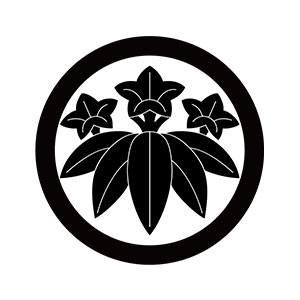Ise Kameyama Domain (2/2)Ruled by many feudal lords

Ishikawa family crest: “Maru and Sasa Dragon”
- Article category
- History of the domain
- domain name
- Ise Kameyama Domain (1600-1871)
- Affiliation
- Mie Prefecture
- Related castles, temples and shrines

Kameyama Castle
- related castles
When Sokei Ishikawa retired, his son Soei Ishikawa succeeded him, but he died young in his early 20s. He was succeeded by his son, Sosumi Ishikawa, but because of this, his uncle, Sosuke Ishikawa, took over. However, because Souichi Ishikawa also died young, Soujun Ishikawa took over as head of the family at the age of 18. Around this time, in the name of financial reconstruction, the Ise-Kameyama domain strengthened tax collection such as ``Moriyama Goyokin'', ``Koshu Goyokin'', ``Mullow Year Tribute'', and ``Tea Year Tribute'', and re-examined the land, which until now was recorded as wasteland. The land that had been cultivated was treated as ``fields'' and was subject to taxation. As a result, over 5,000 farmers from 83 villages gathered together and staged an uprising. As a result, the feudal lord, Sojun Ishikawa, accepted the demands of the uprising and dismissed the Ōshoya, shoya, county magistrate, and magistrate. Perhaps due to stress, Sosumi Ishikawa passed away at the young age of 19.
Even after that, disasters and poor harvests frequently occurred in the Kameyama domain.
During the time of Souhiro Ishikawa, who succeeded Sozumi Ishikawa, there were major floods in the Anraku River and Mukugawa River in the Suzuka River system, and during Soki Ishikawa's time, there were bad harvests due to heavy rainstorms (the Great Tenpo Famine). The feudal lords of the Ishikawa family boldly confront this. In particular, the 8th lord of the domain, Soki Ishikawa, four generations after Sohiro Ishikawa, gave away 4,000 koku of stored rice to the people of his domain, and lent an additional 3,000 koku to rice merchants to sell at a low price, thereby preventing the price of rice from rising. It is recorded that the shogunate highly valued his achievements and recommended Soki Ishikawa to the senior councillor. However, Soki Ishikawa was persuaded by Shingata that he would not be able to fully devote himself to the administration of the domain if he assumed the position of roju, so he declined this offer.
After Sojun Ishikawa, three more male generations of the Ishikawa family took over as lords. However, Soroku Ishikawa passed away at the young age of 34, his son Soshu Ishikawa was 14, and his successor Shigeyuki Ishikawa was 24. Therefore, Sosumi Ishikawa continued to hold the real power of the domain even though he retired. Sojun Ishikawa left the administration of the domain to the conservative retainers, who were divided between those who were pro-Imperial and those who were conservative, and rejected those who were pro-Imperial. Therefore, Soroku Ishikawa, who succeeded Sojun Ishikawa, was given important positions by the shogunate, such as guarding the Imperial Princess Kazunomiya who was married to Edo and the French legation.
Ise Kameyama Domain before and after the Meiji Restoration
When the Boshin War broke out in 1868, the 16th lord of the Ise-Kameyama domain, Shigeyuki Ishikawa, initially sided with the former shogunate army, but later switched sides to the government army. However, after the new government was established, he was accused of collaborating with the former shogunate and was forced to go to war in Toba and other areas. Later, in 1869, Shigeyuki Ishikawa became the governor of the Kameyama domain due to the restoration of land ownership, but he was removed from the position of governor due to the abolition of domains and establishment of prefectures. After that, Nariyuki Ishikawa died at the age of 24, and only Sosumi Ishikawa survived until 1886, when he died in Tokyo. After the abolition of feudal domains and the establishment of prefectures, the buildings of Ise Kameyama Castle were destroyed one by one, and the only thing that remains today is Tamon Yagura.
Reread the article on Ise Kameyama Domain
- related castles

- WriterAYAME(Writer)I am a writer who loves history, focusing on the Edo period. My hobbies are visiting historical sites, temples and shrines, and reading historical novels. If there is a place you are interested in, you can fly anywhere. I'm secretly happy that the number of sword exhibitions has increased recently thanks to the success of Touken Ranbu.



